Organic solar cells based on small molecule donor and polymer acceptor
Wanru Xu,Yilin Chang,Xiangwi Zhu,Zhnhua Wi,Xiaoli Zhang,Xiangnan Suna,b,,,∗,Kun Lu,Zhixiang Wi
aCollege of Chemistry,Zhengzhou University,Zhengzhou 450001,China
bCAS Key Laboratory of Nanosystem and Hierarchical Fabrication,CAS Center for Excellence in Nanoscience,National Center for Nanoscience and Technology,Beijing 100190,China
cUniversity of Chinese Academy of Sciences,Beijing 100049,China
dShandong First Medical University,Shandong Academy of Medical Sciences,Taian 271016,China
eSchool of Material Science and Engineering,Zhengzhou University,Zhengzhou 450001,China
1These authors contributed equally to this work.
ABSTRACT Small molecule donor/polymer acceptor(SD/PA)-type organic solar cells(OSCs)have attracted widespread attention in recent years due to the continuing power conversion efficiency(PCE)growth,near 10%,and the excellent thermal stability for the practical applications.However,the development of SD/PA-type OSCs lags far behind that of polymer donor/small molecule acceptor(PD/SA)-type OSCs,which are also based on the combination of small molecule and polymer,with the PCEs exceeding 18%.The reasons accounting for this great gap are well worth exploring.In this review,we have analyzed the key factors affecting the photovoltaic performances of SD/PA-type OSCs,systematically summarized the research progress of SD/PA type OSCs in recent years,and put forward our own views on the future development of SD/PA type OSCs.
Keywords:Organic solar cells Small molecule donor Polymer acceptor Phase separation Thermal stability
1.Introduction
As a new type of clean energy technology,solar cells have been considered as a good candidate for effectively utilizing solar energy[1].It is remarkable that organic solar cells(OSCs),with their wellknown advantages of low cost,lightweight,and capability to fabricate flexible large-area devices,have shown great research value and considerable commercial application prospects[2-7].In the sandwich-type device structure of OSC,the key component is the active layer with the interpenetrating network structure formed by mixing the donor and acceptor[8,9].The donor materials are mostly p-type polymers or small molecules,while acceptor materials can be classified into three categories:fullerene derivatives,n-type fused ring small molecules and n-type polymers.Fullerene derivatives,relying on their high mobility and isotropic transport characteristics,have been the most popular acceptor materials in the early stage of the development of OSCs[10-15].Therefore,in order to improve the power conversion efficiencies(PCEs)of OSCs,the great majority of researchs are focused on the development of novel and efficient donor materials,and some remarkable results have been successfully achieved[16-22].So far,the highest PCE of 11.7% for the fullerene-based OSCs was obtained by the combination of a narrow bandgap polymer donor(PD)and a fullerene type small molecule acceptor(SA)[23].However,the intrinsic limitations of fullerene acceptors,such as the weak light absorption,non-easy tunable energy levels,have prevent further improvements for the efficiency and stability of the fullerene-based OSCs.In order to overcome these inherent shortcomings of fullerene acceptors,non-fullerene acceptor materials have become a research hotspot in the field of organic photovoltaics in recent years[24-30].It is well known that the PCEs of SAs-based OSCs have been greatly improved when coupling with the small molecule donors(SDs)or PDs[20,31-34].The all-small-molecule OSCs have exhibited the PCEs of approaching 16%,and it is worth noting that the performances of PD/SA systems are particularly outstanding,with the highest PCE of 18.56%[31,35].Although the PCEs of these two kinds of OSCs have reached the level of commercial application,the thermal stability of the corresponding devices has not been enough for their practical work situation.To solve the issue,polymer acceptors(PAs)have attracted wide attention from researchers because of their additional advantages,such as superior thermal and mechanical stability.PAs-based OSCs,which have been reported with excellent thermal stability,have delivered the excellent PCE of over 16% for all-polymer system and 9.51% for SD/PA system[36-38].
Compared with the flourishing PD/SA and SD/SA systems,there is still a great gap in the photovoltaic performance for SD/PAtype OSCs,whose highest PCE has not exceeded 10% to date[31-33,39].There are two main reasons accounting for such poor performances of SD/PA systems.On one hand,due to the lack of novel and high-performance polymer acceptors,the in-depth study on the structure-performance relationship of SD/PA-type OSCs is still scarce.On the other hand,the undesirable morphology with large-scale phase separation in the active layer of SD/PA systems,severely limits the extion diffusion/dissociation,resulting in low device performance[40-43].Especially,PD/SA system with the most outstanding performance,which is also based on the combination of small molecule and polymer,is far ahead of SD/PA-type OSCs.The corresponding reasons are worth exploring.Firstly,a wide variety of high performance small molecule acceptors have been developed[24,27-29],benefiting from their easily adjustable energy level,spectrum and crystallinity,especially the emergence of Y6[24],which has rapidly promoted the development of PD/SA systems.By contrast,the researches about SD/PAtype OSCs are sluggish,mainly because of the slow development of novel and high-performance polymer acceptor materials.Secondly,small molecular acceptors,with relatively low phase transition temperature and low crystallinity,tend to self-aggregate or crystallize at high temperature,thereby leading to more moderate morphology for the PD/SA blend.However,active layers of SD/PA blend always suffer from the undesirable morphology with largescale phase separation,which is heavily induced by the high crystallinity of small molecular donors[41,42,44].Even so,it is still worth paying sufficient attention on the SD/PA systems,since they tend to have superior thermal stability according to some reported results,which is essential for the practical application of OSCs[39,44-46].The excellent thermal stability of SD/PA system may be attribute to phase stability of the polymer acceptor and the high crystallinity of the small molecule donor.For example,the performance of PD/SA system constructed by PTB7-Th and EH-IDTBR,under the condition of heat treatment at 150 °C for 3 days,is significantly reduced,and only 62% of the original performance can be maintained[39].However,the device of BD3T:PBN-15 has retained 84% of the initial PCE value after 3 days of heat treatment at 150 °C,mainly due to the high crystallinity and high crystallization temperature of small molecule BD3T,as well as the phase stability of the polymer PBN-15[39].In addition,for the all small molecule system based on BDT2TR and PC71BM,only 33% of its initial PCE was maintained when annealing at 150 °C for 15 h.In contrast,after annealing at 150 °C for 15 h,the BDT2TR:PNDI-2T-based device has retained 93% of its original PCE,benefiting from excellent thermal stability of polymer PNDI-2T[46].These results have successfully proved that the high crystallinity of small molecule and thermal stability of polymer play an important role in the excellent thermal stability of SD/PA systems.In addition to thermal stability,there is another advantage with the SD/PA systems:mechanical stability,which also increases its potential for the practical application of the device[46].And given the existing problems,designing novel polymer acceptors with high electron mobilities and appropriate small molecule donors with adjustable crystallinity,which can afford an ideal morphology that small molecule interspersed and stacked among the polymer chains in the blend film,should be the key points to avoid large-scale phase separation as well as achieve performance breakthrough for SD/PA-type OSCs.
In this review,the key factors limiting the photovoltaic performances of SD/PA type OSCs are briefly discussed,and the progress of the material structure evolution and performance improvements for SD/PA-type OSCs in recent years are systematically summarized and analyzed.We hope that this review can provide a certain reference for the future research in this field,especially for the design of the novel photovoltaic materials and the morphology control of the blend films,so as to promot the rapid development of this type of OSCs,and speed up the commercialization process of organic photovoltaic.
2.Main factors impacting the performances of SD/PA-type OSCs
2.1.Lack of high-performance PAs
Compared with other types of organic photovoltaic materials,such as polymer donors,small molecule donors and small molecule acceptors,the development of polymer acceptors is undoubtedly very slow.To date,there are only four kinds of representative material systems applied in SD/PA-type OSCs.(1)Perylene diimide(PDI)-based polymer acceptors.It was the introduction of this kind of materials that really kicked off the research of SD/PA-type OSCs[42,47-50].(2)Naphthalene diimide(NDI)-based polymer acceptors.Most of relevant researches on this kind of materials mainly focus on P(NDI2OD-T2),also named N2200,which is one of the most famous materials in organic electronics[51-54].Due to the high electron affinities and the decent electron transport capabilities of the NDI and PDI unit,a wide range of polymers based on them have been extensively exploited as the acceptor materials.However,the OSCs based on these polymers usually exhibited very low open circuit voltage(VOC)and short circuit current(JSC),usually resulting from the low-lying lowest unoccupied molecular orbital(LUMO)energy level and deficient absorption capacity.(3)Acceptor–donor–acceptor(A-D-A)building blockbased polymer acceptor.It is fair to say that this kind of material is a major innovation for the field of polymer acceptors.This kind of material possessed relatively high electron mobility and strong absorption,which is promising narrow bandgap polymer acceptor material[55,56].However,only one work about SD/PA-type OSC using this type of polymer as acceptor was reported,therefore,it is necessary to conduct intensive study on SD/PA systems based on it[57].(4)Double B←N bridged bipyridyl(BNBP)unit-based polymer acceptors.As a new system of polymer acceptor,it has delivered the optimized photovoltaic performance for SD/PA-type OSCs[39].This kind of polymer acceptors are considered as the potential substitute for N2200,due to their high electron mobilities,strong absorptions in the visible range,and relatively higher LUMO energy levels,benefiting from the particular structure of B←N unit.However,the wide bandgap of the material severely restricts the effective absorption of the sunlight,thereby affecting the further improvement of device performance.To some extent,it is the emergence of these electron-deficient building blocks(Fig.1)that contributes to the continuous development of polymer acceptors.The detailed description about these materials and their photovoltaic performances will be discussed in the following section.Although the remarkable progress on the polymer acceptors has been achieved in the past two decades,the shortage situation of high-performance PA-type materials has not been completely broken,which is still an important factor restricting the rapid development of the SD/PA-type photovoltaic systems.
2.2.The non-ideal morphology of SD/PA blend
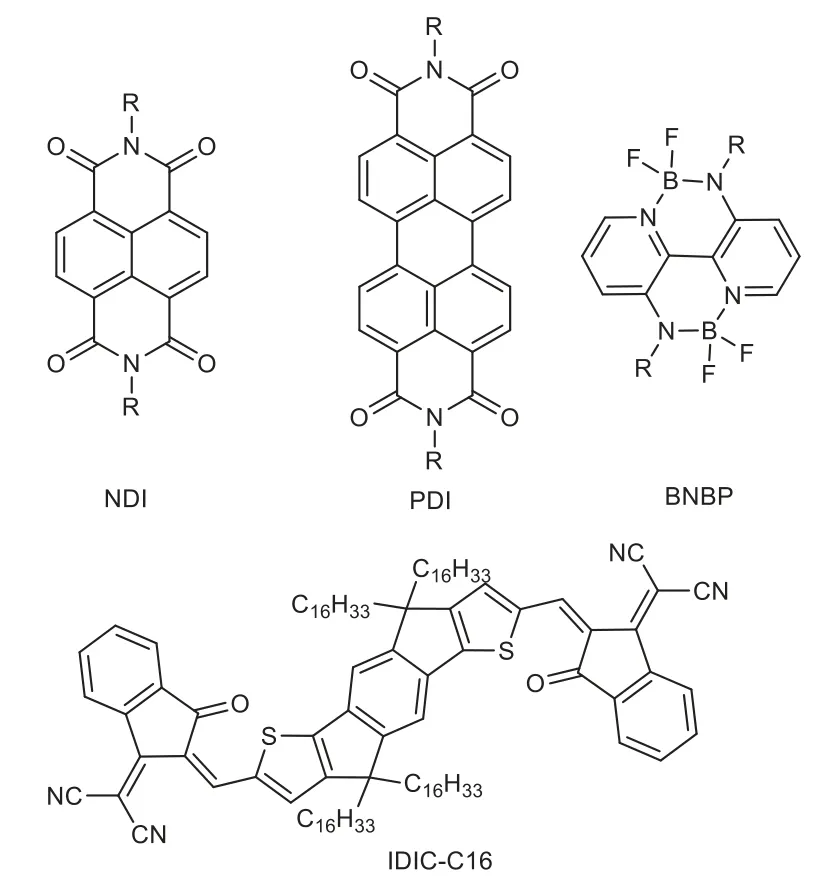
Fig.1.Typical electron-deficient building blocks of representative polymer acceptors for SD/PA-type OSCs.

Fig.2.Schematic illustration of the morphology evolution process of(a)DR3TBDTT:P-BNBP-fBT and(b)DR3TBDTC:P-BNBP-fBT blends.Reproduced with permission[41].Copyright 2019,The Royal Society of Chemistry.
In addition to the relatively deficient high-performance polymer acceptors,the non-ideal morphology with large-scale phase separation of the blend film for SD/PA-type OSC is also one of the important factors that impacts the photovoltaic performances for SD/PA systems[41,42,58].This is mainly because most of small molecule donors designed for organic photovoltaics possess planar conjugated structure,strong intermolecular interactions and high crystallinity.When blending with polymer acceptors,they tend to aggregate and form discontinuous large-sized domains.While the existence of large-sized domains is unfavorable for the diffusion and dissociation of excitons,leading to the lowJSCand fill factor(FF).Consequently,trying to obtain nanoscale phase separation has become a key point in constructing high-performance SD/PA type OSCs.To date,some successful techniques have been adopted in the morphology optimization for SD/PA systems.Firstly,on the molecular structure level,the phase separation process of SD/PA blend can be effectively controlled by reducing the crystallinity/intermolecular interaction of small molecule donor or increasing the aggregation/crystallization of polymer acceptor[39,41,44].Secondly,on the device fabrication level,some developed methods,such as the solvent additives,thermal annealing and solvent annealing,are also conducive to optimizing the film morphology[45,57].More often,both the two strategies should be taken together to obtain better results.In this respect,Zhanget al.have given an important and successful example.As shown in Fig.2,they found that the small molecule donor of DR3TBDTC,with suppressed intermolecular interactions than DR3TBDTT,cankeep amorphous state after spin coating,and then DR3TBDTC can crystallize into the nano-sized domain by further post-annealing,thereby forming more favorable interpenetrating networks of small molecule donors and polymer acceptors[41].
3.Representative material systems of SD/PA-type OSCs
Based on the previous introduction,it is easy to find that there are relatively few types of polymer acceptors applied in SD/PA-type OSCs.This does not mean that some of the existing and emerging polymer acceptors are not suitable for the field of SD/PA-type OSCs,but just an epitome of how little research has been done on them.So,we will focus on the research progress of some representative SD/PA-type OSCs in this section depending on the type of polymer acceptors involved.
3.1.SD/PA-type OSCs based on PDI-type polymer acceptors
As a typical electron-deficient unit,PDI has been widely used in constructing new kinds of small molecule and polymer acceptors due to its high electron affinity and decent electron transport ability[59-65].Among a wide range of PDI-based polymer acceptors,PPDIDTT,composed of PDI and an electron-donating unit of dithieno[3,2-b:2′,3′-d]thiophene,has displayed wide absorption,high electron mobility,and good film-forming property,which was often used as an efficient polymer acceptor for all-polymer solar cells[66-68].Until 2014,Zhan’s group had applied it to the SD/PA photovoltaic system for the first time with a narrow bandgap small molecule donor,p-DTS(FBTTh2)2(Fig.3).p-DTS(FBTTh2)2was selected as the first donor material for this kind of SD/PA system,mainly because of its relatively deep and suitable highest occupied molecular orbital(HOMO)energy level,high mobility and wide absorption,which is also a star small molecule for the all-small molecule system[69-71].Although the photovoltaic performance for the first SD/PA-type OSC was only 0.29%(Table 1),badly affected by the chapped and discontinuous film morphology of the active layer,this work has initiated a new direction of SD/PA-type OSCs and broadened the research system of non-fullerene solar cells,as well as opened up a new way for the development of OSCs[42].Subsequently,they changed the donor to a small molecule DIB-SQ(Fig.3)with high absorption coefficient in the near-infrared region,which also has complementary absorption and matched energy level with PPDIDTT.Interestingly,there was no photovoltaic response for the blend of DIB-SQ/PPDIDTT.But for layer by layer(LL)solution processed device,a weak photovoltaic response was observed even with a low PCE of 0.06%.Then,the device was posttreated by thermal annealing,not only a better morphology but also efficient vertical phase separation was successfully achieved,leading to the efficient charge transport and reduced charge recombination.As a result,the device performance was improved to 1.12%(Table 1)[58].

Table 1 Summary of the photovoltaic properties of the combinations of PDI-type PAs and SDs.
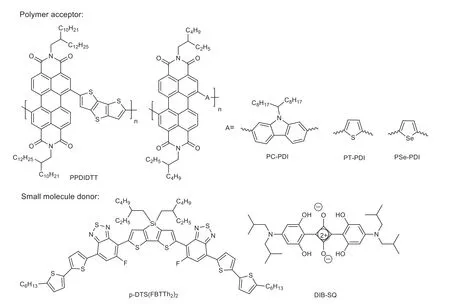
Fig.3.Chemical structures of PAs and SDs employed in SD/PA-type OSCs based on PDI-type PAs.
Almost simultaneously,Zhou’s group also carried out research on SD/PA-type OSCs based on p-DTS(FBTTh2)2and three PDI-type polymers,PC-PDI,PT-PDI and PSe-PDIs(Fig.3).All of initial performances for the three SD/PA combinations were extremely low.But after introducing 1,8-diiodooctane(DIO),a very common additive,to the coating solution,the PCEs of three devices all have been significantly improved,which are mainly benefiting from the enhanced charge transfer and the hole transport with more continuous and effective donor phase for the blend film.Among them,the p-DTS(FBTTh2)2/PSe-PDI-based device displayed the highest PCE of 3.01%(Table 1),which is also the optimized value for PDI-type polymer-based SD/PA systems[49].Although these studies on PDItype polymer-based SD/PA systems are relatively few and their photovoltaic performances are relatively modest,they do provide valuable references for the following exploration on the SD/PA systems.
3.2.SD/PA-type OSCs based on NDI-type polymer acceptor
In 2009,Facchetti’s group developed an n-type polymer,named P(NDI2OD-T2)(also named as PNDI-2T or N2200)(Fig.4),by selecting NDI as the electron-withdrawing unit and 2,2′-bithiophene as the electron-donating unit[51].Since the advent of the polymer,it has rapidly become a widely used acceptor material,largely driven by its excellent properties of high electron mobility and superior environmental stability[52,72-76].This makes it a natural choice when constructing SD/PA-type OSCs.And so,a large number of relevant works have focused on the selection of proper small molecule donors to pair with it.The following discussion will elaborate on the research progress of SD/PA-type OSCs based on various combinations of different small molecule donors and P(NDI2OD-T2).
As discussed earlier in SD/PA-type OSCs based on PPDIDTT,the small molecule of p-DTS(FBTTh2)2(Fig.4)was also selected as the first donor material to pair with P(NDI2OD-T2).But compared with the combination of p-DTS(FBTTh2)2/PC71BM,the p-DTS(FBTTh2)2/P(NDI2OD-T2)-based device only exhibited a moderate PCE of 2.11%(Table 2),badly affected by the extremely low exciton diffusion length of P(NDI2OD-T2),as well as the overlap of donor and acceptor absorption[77].However,on the condition of thermal annealing at high temperature,the enhanced PCE of 3.02% was reported by Kimet al.,and it was noteworthy that the PCE value still remained 70% after heating at 180 °C for 20h,displaying excellent thermal stability[45].The main reason accounting for this phenomenon is p-DTS(FBTTh2)2can stabilize the morphology of the active layer at high temperature due to its low diffusion kinetics.As the initial report of device stability for SD/PA-type OSC,this work demonstrated the advantage of the SD/PA combination in the preparation of stable photovoltaic devices.Next,two p-DTS(FBTTh2)2analogs,DTSi(FBTTh2Cy)2and DTGe(FBTTh2Cy)2with cyclohexyl-end-side groups,were designed and synthesized,and two hexyl-terminated analogs DTSi(FBTTh2)2and DTGe(FBTTh2)2(Fig.4)were used to conduct the comparative study so as to understand the impact of minor structural changes on the device performances.Although DTSi(FBTTh2Cy)2and DTGe(FBTTh2Cy)2possessed relatively high LUMO and HOMO energy levels,which were not conducive to obtaining highVOC,the blend films composed of cyclohexyl-terminated small molecule donors and N2200 showed preferential face-on orientation,leading to the enhancedJSCand FF.Finally,the improved PCEs of 2.68% and 3.04%(Table 2)for DTSi(FBTTh2Cy)2/N2200 and DTGe(FBTTh2Cy)2/N2200-based devices were obtained,respectively,which were higher than those of SD/PA systems based on hexyl-terminated small molecule donors and N2200[78].Accordingly,fine-tuning the molecular structure to control the molecular orientation of the blend film may provide a promising and effective strategy for improving the efficiencies of the SD/PA systems.
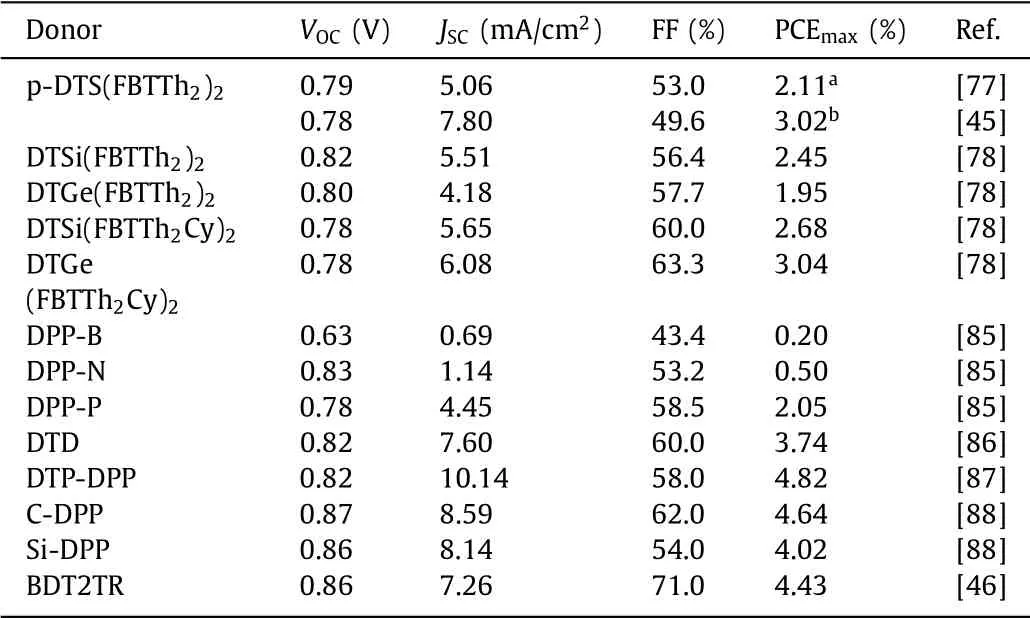
Table 2 Summary of the photovoltaic properties of the combinations of P(NDI2ODT2)/N2200/PNDI-2T and SDs.

Fig.4.Chemical structures of PAs and SDs employed in SD/PA-type OSCs based on NDI-type PAs.

Fig.5.Chemical structures of PAs and SDs employed in SD/PA-type OSCs based on PAs with A-D-A building block.
Among a series of works about SD/PA-type OSCs based on N2200 as the polymer acceptor,1,4-diketo-pyrrolo[3,4-c]pyrrole(DPP)-based small molecule is also a kind of widely used donor materials,because of those unique characteristics of DPP,such as high extinction coefficient in the visible light range,strong electron-withdrawing ability and high planarity[79-84].Some DPP-based small molecule donors with very simple structure have been reported by Yuanet al.According to the used end groups(benzene,naphthalene and pyrene),these three DPP-type molecules were named as DPP-B,DPP-N and DPP-P,respectively(Fig.4).Among them,DPP-P,with the largestπ-conjugated endgroup,showed higher crystallinity and planarity,higher hole mobility and light absorption capacity than DPP-B and DPP-N,resulting in the highest PCE of 2.05%[85](Table 2).Unlike these small molecules using DPP as the central unit,Tanget al.has designed and synthesized a novel molecule,named DTD(Fig.4),using thieno[2,3-f]benzofuran(TBF)as the central unit and DPP as the end-group unit.This small molecule showed high hole mobility,wide absorption spectrum,and proper energy level matching with N2200,all of which are the required characteristics for a good donor material.The DTD/N2200-based device has displayed a relatively higher PCE of 3.74%(Table 2)than that(3.44%)of DTD:PCBM-based device[86].Moreover,Junget al.have introduced a strong electron-donating unit,5H-dithieno[3,2-b:2′,3′-d]pyran(DTP),to construct a new DPP-based small molecule donor,DTPDPP(Fig.4).When blending it with P(NDI2OD-T2),the significantly improvedJSCof 10.14 mA/cm2and PCE of 4.82%(Table 2)were successfully obtained,which were the highest current density and device performance among SD/PA-type OSCs based on imide polymers[87].In addition to above mentioned two-dimensional(2D)DPP-type small molecules,three-dimensional(3D)small molecules were also investigated in the research of SD/PA-type OSCs.Two DPP-based 3D small molecules,C-DPP and Si-DPP(Fig.4),were designed by Liuet al.to promote multi-directional hole carrier transport.By virtue of the complementary light absorption and balanced charge mobilities of 3D small molecules and N2200,CDPP/N2200 and Si-DPP/N2200-based devices delivered respectable PCEs of 4.64% and 4.02%(Table 2),respectively.As the first report on SD/PA-type OSC composed of 3D small molecule donor and polymer acceptor,it provides a new perspective to develop more suitable materials for SD/PA system by exploring the molecular geometry[88].
Except for the DPP unit,the benzo[1,2-b:4,5-b′]dithiophene(BDT)unit also has gained wide attention in recent years due to its well-known characteristics of good planarity,excellent hole transport ability,and so on[89,90].In particular,some highly efficient BDT-based donor materials have significantly promoted the development of organic photovoltaic devices[33,89-94].As an excellent small molecule donor for fullerene-based system,BDT2TR(Fig.4)was also introduced to the research of SD/PA-type OSCs by Ohet al.[46,95].When blended with PNDI-2T,a remarkable PCE of 4.43%(Table 2)was achieved,which was one of the highest efficiencies for the SD/PA system at the time.It is worth noting that the FF of 71% is the highest value for SD/PA-type systems reported so far,mainly benefiting from the highly crystalline nature and balanced charge carrier mobility of donor and acceptor.More importantly,after thermal annealing at 150 °C for 15 h,a slightly decreased PCEof 4.15% can still be maintained,demonstrating superior thermal stability of this kind of photovoltaic system[46].The successful application of small molecule donor based on BDT unit provides a promising direction for the high-efficiency SD/PA systems in the future and great opportunities to accelerate the development of this field.

Table 3 Summary of the photovoltaic properties of the combinations of PA with A-D-A building block and SD.
3.3.SD/PA-type OSCs based on polymer acceptors with A-D-A building block
In 2017,Zhanget al.reported a new kind of polymer acceptor,named PZ1(Fig.5),which possessed broad absorption with a low band gap and higher absorption coefficient than that of N2200[96].PZ1 was developed by introducing an analogue of high-performance fused ring small molecule acceptor(IDIC)to the backbone of the n-type polymer.The embedding of this building block enabled the resulting polymer to preserve the merits of small molecule acceptor,such as high electron transport ability and improved light absorption capacity.In addition,PZ1 also showed the advantages of improved solubility and good film forming property,which are conductive to the large-scale manufacturing.The PZ1-based all-PSC delivered an extremely high PCE of 9.19%,which was the highest value for the all-PSCs at that time[96].More importantly,this work has provided a new design strategy for constructing high-efficiency polymer acceptors.Next year,they had applied PZ1 to SD/PA-type OSCs,and two A-D-A type BDT-based small molecules,SM1 and DR3TBDTT,were selected as the donor materials to pair with PZ1(Fig.5).Although the initial performances were less than 1% for both two devices,but after additive treatments,the proper phase separation,the enhanced carrier mobility and the suppressed carrier recombination had been successfully achieved,leading to the significant improvements of PCEs,0.36% to 3.97% for SM1/PZ1-based device and 0.24% to 5.86% for DR3TBDTT/PZ1-based device(Table 3)[57].Although it is the first attempt to apply this kind of polymer acceptor in the field,such a novel and fruitful molecule design concept undoubtedly provides a new idea for constructing high-performance SD/PA-type OSCs,and there is still a lot of room for further improvements.
3.4.SD/PA-type OSCs based on polymer acceptors with double B←N bridged bipyridyl(BNBP)unit
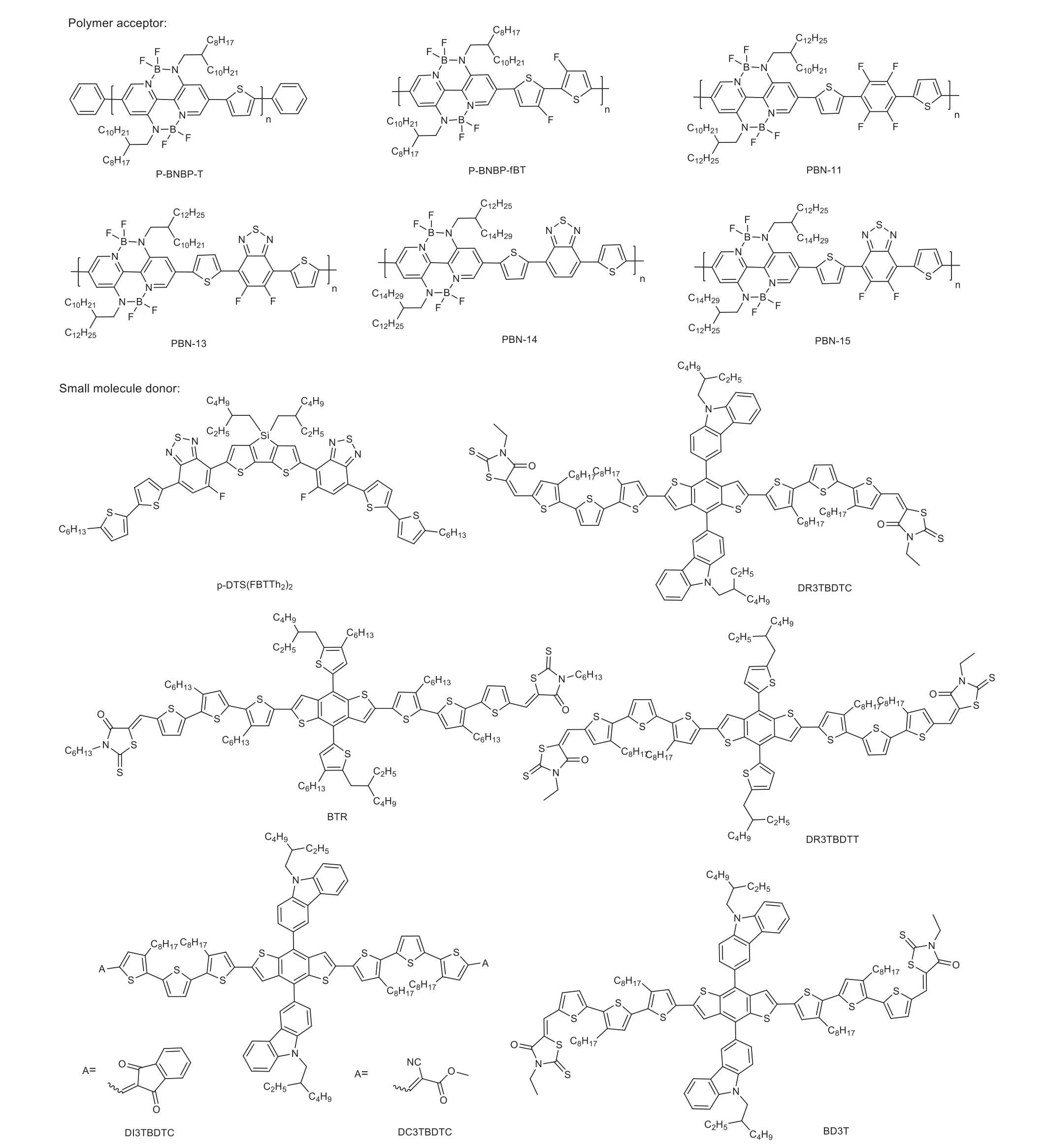
Fig.6.Chemical structures of PAs and SDs employed in SD/PA-type OSCs based on PAs with BNBP unit.
Despite the emergence of new polymer acceptors such as PZ1,the lack of highly efficient polymer acceptor materials has not been fundamentally alleviated.The deficiencies of low electron mobility,weak absorption coefficient and high LUMO level commonly for the most reported acceptors are still important factors severely limiting the PCEs of SD/PA-type OSCs.To overcome these limitations,Liu’s group independently developed a new kind of polymer acceptors based on BNBP unit with high electron mobility,strong absorption in the visible range,and relatively higher LUMO energy level,making them a promising substitute for PDI/NDI-type polymer acceptors[97-100].P-BNBP-T(Fig.6)was the first BNBPtype polymer reported for OSCs,which has a very simple donoracceptor structure by using thiophene as the electron-donating unit and BNBP as the electron-withdrawing unit[100].Likewise,they have chosen p-DTS(FBTTh2)2as the small molecule donor to pair with P-BNBP-T.Although the corresponding SD/PA-type device only displayed a moderate PCE of 3.50%(Table 4),such a result was much higher than that of any other p-DTS(FBTTh2)2/polymer acceptor based OSCs reported at the time,indicating that the BNBPbased polymer acceptors may have great prospects for the construction of high-performance SD/PA-type OSCs.More importantly,theVOCvalue of the optimized device has risen an astonishing1.08 V,which was the first time for the SD/PA system with the extremely highVOCof more than 1 V[101].

Table 4 Summary of the photovoltaic properties of the combinations of PAs with BNBP unit and SD.
Although great breakthrough ofVOChas been achieved for this kind of SD/PA system,its development still lags far behind than the same combination of PD/SA-type OSC with the relatively lowJSCand FF,mainly because of the non-ideal phase separation structure of the blend film.Generally,most small molecule donors always possess strong intermolecular interactions and high crystallinity,not compatible with the polymer acceptor.As a result,large-scale phase separation usually occurs for the SD/PA system,severely limiting the diffusion and dissociation of excitons and finally leading to the poor photovoltaic performance.It has been reported that the phase separation process of active layer is related to the crystallinity and aggregation of donor and acceptor materials[39,41].So,a series of studies have been carried out by Liu’s group on the control of the film morphology for the SD/PA system.Firstly,a ternary OSC composed of two small molecule donors(DR3TBDTT and BTR)with similar chemical structures and a polymer acceptor(P-BNBP-fBT)has been constructed(Fig.6)with a moderate PCE of 4.85%(Table 4),which was higher than those of two binary devices(3.60% for DR3TBDTT/P-BNBP-fBT and 3.86%for BTR/P-BNBP-fBT)[40].The reason for the obvious performance enhancement of the ternary system is that the crystalline size of the small molecule materials has been effectively decreased,delivering improved and balanced charge mobility,suppressed charge recombination and increased donor/acceptor interfacial areas for the ternary blend film[40].Secondly,side chain engineering was introduced to the modification of small molecule donors.A new small molecule(DR3TBDTC)(Fig.6)with large side chain substituent has been selected as donor to pair with P-BNBP-fBT,to study the impact ofπ-πstacking capacity of small molecule donor on the film morphology and device performance(Fig.7).By comparing the aggregation property with DR3TBDTT,a clear guideline to manipulate phase-separation morphology for SD/PA system has been successfully obtained:if the small molecule donor possesses the weak aggregation property,the polymer acceptor will dominate the phase separation process,helpful in achieving small-size phase separation.Accordingly,DR3TBDTC/P-BNBP-fBTbased device demonstrated a further boost of PCE(5.28%),mainly benefiting from the weakerπ-πstacking in DR3TBDTC molecules[41].Thirdly,P-BNBP-fBT with different molecular weights were selected as the polymer acceptors to pair with DR3TBDTC for investigating the effect of molecular weight on active layer morphology and device performance of SD/PA-type OSC,since high molecular weight usually cause stronger aggregation for polymer chains.Zhanget al.found that the high molecular weight was able to enhance the crystallinity of P-BNBP-fBT as well as suppresses the crystallization of DR3TBDTC.Therefore,the blend film exhibited a small size phase separation,leading to a significantly improved PCE of 6.38%[102].In addition,another BNBP-based polymer,PBN-11(Fig.6),was also selected as the acceptor to pair with DR3TBDTC,an improved PCE of 8.01%(Table 4)has been obtained.More importantly,89% of the initial PCE can be maintained for the device after thermal annealing at 180 °C for 7 days[44].This result can be viewed as a major breakthrough not only in the photovoltaic performance but also in the device stability for SD/PA-type OSCs.
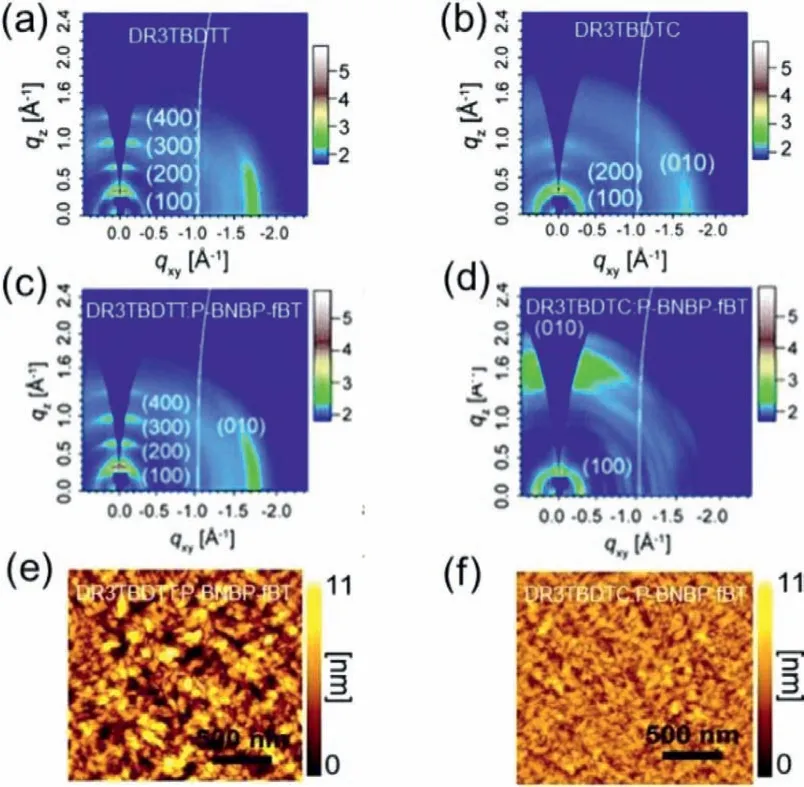
Fig.7.2D-GIWAXS patterns of the(a)DR3TBDTT film with strong π-π stacking and(b)DR3TBDTC film with week π-π stacking,(c)thermal annealed DR3TBDTT:PBNBP-fBT blend film and(d)thermal annealed DR3TBDTC:P-BNBP-fBT blend film;AFM height images of the(e)thermal annealed DR3TBDTT:P-BNBP-fBT blend film,with root-mean-square(RMS)roughness of 3.90 nm,(f)thermal annealed DR3TBDTC:P-BNBP-fBT blend films,with RMS roughness of 1.16 nm.Reproduced with permission[41].Copyright 2019,The Royal Society of Chemistry.
Next,Liu’s group has carefully investigated the effect of terminal groups of small molecule donors on the device performances for SD/PA-type OSCs.Based on the main chain structure of DR3TBDTC,two other small molecules,DI3TBDTC with 2H-indene-1,3-dione as terminal group and DC3TBDTC with 2-cyanoacetate as terminal group(Fig.6),were designed.Due to the different electron-withdrawing ability of the three terminal groups,the optoelectric properties of these small molecule donors have been finetuned.When blended with a new polymer acceptor of PBN-13(Fig.6),it was interesting that DR3TBDTC-based device exhibited the optimized PCE of 8.03% among three kinds of OSCs,much higher than those of DI3TBDTC-based device(with PCE of 3.37%)and for DC3TBDTC-based device(with PCE of 5.20%)(Table 4).Such a result should be attributed to the balanced hole and electron mobility,and low charge recombination of the DR3TBDTC/PBN-13 system,leading to the enhancedJSCand FF[103].
Recently,they have adopted a newπbridge of 3,4′-dioctyl-2,2′:5′,2′′-terthiophene to instead the old bridge of DR3TBDTC and synthesized a new small molecule donor,BD3T(Fig.6)[39].They further studied the effect of polymer aggregation on the film morphology and device performance,utilizing two BNBP-based polymer,PBN-14 and PBN-15(Fig.6),as the matched acceptors.Among them,PBN-15 showed a stronger aggregation tendency relative to PBN-14 in solution.The corresponding photovoltaic performance of BD3T/PBN-15-based device has reached 9.51%,much better than that of BD3T/PBN-15-based device,only 5.06%(Table 4).The outstanding performance for BD3T/PBN-15 system can be attributed to the small size phase separation of the blend film,as the crystallization of BD3T is suppressed by the strong aggregation and crystallization of PBN-15.This result fully demonstrates the importance of polymer aggregation in adjusting the morphology of the active layer and improving the device performance for SD/PA-type OSCs.In addition,due to the high crystallization temperature of BD3T,the device showed excellent phase stability and thermal stability,and 84% of the initial PCE value can be retained after 150 °C heat treatment for 3 days.It is worth noting that this combination has delivered excellent thermal stability as well as the highest PCE for SD/PA-type OSCs to date,showing considerable practical application potential for the whole organic photovoltaics[39].
In a word,a series of polymer acceptors based on BNBP unit have been successfully developed and exhibit excellent optoelectric characteristics in SD/PA systems,which broadens the scope of the research on polymer materials and promotes the progress of this field.In addition,a series of studies on reducing the crystallinity/intermolecular interaction of small molecule donors or increasing the aggregation of polymer acceptors also point the way forward for the construction of high-performance SD/PA-type OSCs.
4.Conclusion and outlook
In this review,we have analyzed the important factors limiting the photovoltaic performances of SD/PA-type OSCs,and systematically summarized the research progress of this kind of photovoltaic systems reported to date.Although the remarkable advancements have been achieved for SD/PA systems in the past few years,with the increased PCE of 9.51%,they still lag far behind other types of OSCs,which is mainly due to the lack of high-performance polymer acceptors and the non-ideal morphology of SD/PA blend.Therefore,the focus of future research on the SD/PA-type OSCs should include:developing novel polymer acceptors with narrow band gap,wide absorption,and high electron mobility;selecting the proper small molecule donors to match the above polymer acceptors in terms of energy level,absorption spectrum,hole/electron mobility,etc.;adjusting the compatibility of donor and acceptor to achieve modified morphology with nanoscale phase separation for the SD/PA blend.Predictably,the gap between SD/PA-type OSCs and other kinds of OSCs will inevitably be narrowed through the material innovation and process optimization,and they will certainly distinguish themselves in the field of OSCs by virtue of their superior thermal stability.
Declaration of competing interest
The authors declare that they have no known competing financial interests or personal relationships that could have appeared to influence the work reported in this paper.
Acknowledgments
This work was supported financially by the National Natural Science Foundation of China(Nos.51803040,51822301,21673059,91963126,21822503,and 51973043),the Ministry of Science and Technology of the People’s Republic of China(Nos.2016YFA0200700,2017YFA0206600),the Strategic Priority Research Program of the Chinese Academy of Sciences(No.XDB36020000),Beijing National Laboratory for Molecular Sciences(No.BNLMS201907),Youth Innovation Promotion Association,K.C.Wong Education Foundation,and the CAS Pioneer Hundred Talents Program.
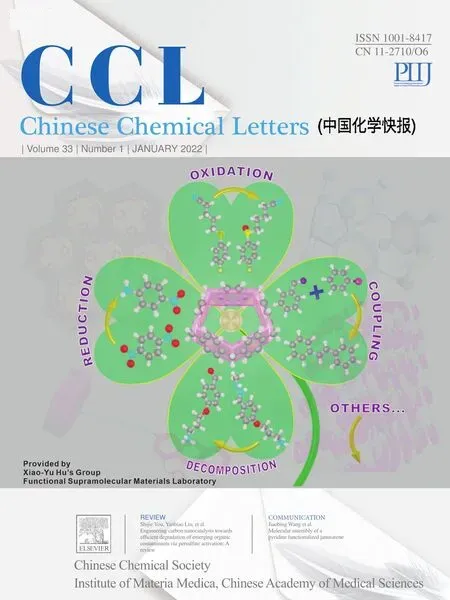 Chinese Chemical Letters2022年1期
Chinese Chemical Letters2022年1期
- Chinese Chemical Letters的其它文章
- Engineering carbon nanocatalysts towards efficient degradation of emerging organic contaminants via persulfate activation:A review
- Recent advances in nanoscale metal-organic frameworks biosensors for detection of biomarkers
- Porphyrin-based heterogeneous photocatalysts for solar energy conversion
- Systematic evaluation of advance in application and discharge mechanism of solution electrode glow discharge
- Insoluble carbonaceous materials as electron shuttles enhance the anaerobic/anoxic bioremediation of redox pollutants:Recent advances
- Selective N-terminal modification of peptides and proteins:Recent progresses and applications
